AMD Radeon HD 7730 Review: A Harbinger Of The Kaveri APU? (original) (raw)
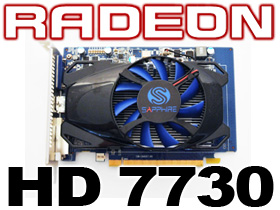
Page 1 of 11:
AMD's Radeon HD 7730: GCN Goes Entry-Level
AMD's Radeon HD 7730: GCN Goes Entry-Level
AMD introduced its Graphics Core Next architecture in the Radeon HD 7970's Tahiti GPU way back in December of 2011. In the 20 months since then, the company's Radeon HD 7750 was the lowest-end model based on GCN. Below that, you'll find older VLIW5-based Radeon HD 6670, 6650, and 6450 boards. Those cards have been around so long that OEMs are rebadging the Radeon HD 6670 as a 7670 just so it sounds new. Bleh.
But AMD recently (and quietly) started shipping a new entry-level Radeon HD 7730 in Asia. Then, it started trickling into Europe. According to Sapphire, you'll soon see it in the U.S. as well.
Although a budget-oriented board centering on GCN isn't going to elevate anyone's heart rate, we really want to see how it compares to the Radeon HD 6600-series cards. More significantly, perhaps, the Radeon HD 7730 may give us a glimpse of AMD's next-generation APU, code-named Kaveri, which my not show up until early 2014.
There's a lot of misinformation floating around about the 7730's GPU, so we cleared things up with AMD to get you a more accurate depiction of its Cape Verde LE graphics processor.
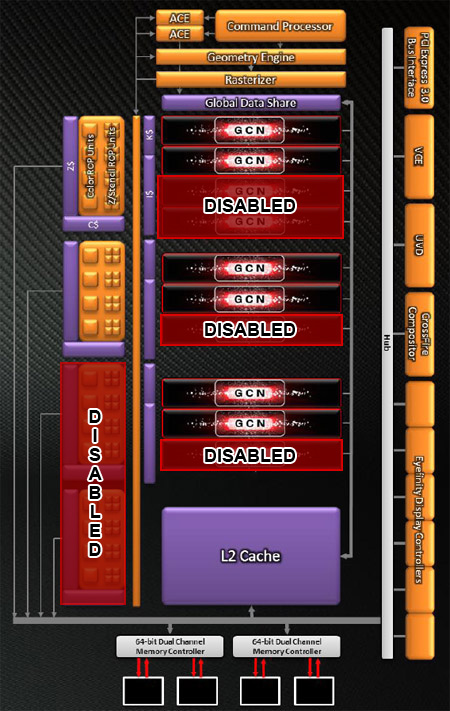
We're not surprised that the Radeon HD 7730 comes armed with a cut-down version of the Cape Verde GPU found in AMD's Radeon HD 7750 and 7770. Both mid-range models have been around for quite a while, and it makes sense that the company would sort its chips to put the imperfect ones to use. The 7730's specifications are also typical of AMD's sub-$100 line-up. Two of Cape Verde's four render partitions are disabled, leaving eight full-color ROPs per clock. An aggregate 128-bit memory interface remains. The GPU has six of its 10 compute units turned on, each hosting 64 ALUs and four texture units, adding up to 384 shaders and 24 total texture units.
Before you try too hard to compare the number of shaders, texture units, ROPs, and memory bandwidth to AMD's Radeon HD 6670, remember that both GPUs leverage different architectures. So, while the 7730 comes up short against the 6670's shader count, we aren't expecting it to be slower. In fact, it should be more efficient, using less power for comparable performance.
When it comes to clock rates, the Radeon HD 6670 and 7730 share the same 800 MHz core frequency. The DDR3 versions of both cards employ 900 MHz memory, while the GDDR5 model of the Radeon HD 7730 enjoys a 125 MHz advantage over the 6670's 1 GHz setting. At the same time, the Radeon HD 7730 GDDR5 is specified for a 17 W-lower TDP than the Radeon HD 6670 GDDR5.
Get Tom's Hardware's best news and in-depth reviews, straight to your inbox.
Swipe to scroll horizontally
| Header Cell - Column 0 | GeForce GT 640DDR3 | Radeon HD 6670 | Radeon HD 7730 | Radeon HD 7750 |
|---|---|---|---|---|
| Shader Cores | 384 (Kepler) | 480 (VLIW5) | 384 (GCN) | 512 (GCN) |
| Texture Units | 32 | 24 | 24 | 32 |
| Color ROPs | 16 | 8 | 8 | 16 |
| Fabrication process | 28 nm | 40 nm | 28 nm | 28 nm |
| Core (Shader) Clock | 900 MHz | 800 MHz | 800 MHz | 800 MHz |
| Memory Clock | 891 MHz DDR3 | 900 MHz DDR3 900-1000 MHz GDDR5 | 900 MHz DDR31125 MHz GDDR5 | 1125 MHz GDDR5 |
| Memory Bus | 128-bit | 128-bit | 128-bit | 128-bit |
| Memory Bandwidth | 28.5 GB/s DDR3 | 28.8 GB/s DDR3 64 GB/s GDDR5 | 28.8 GB/s DDR372 GB/s GDDR5 | 72 GB/s |
| Idle/Max Thermal Design Power | 15/65 W | 10/44 W DDR311/60 W GDDR5 | 47 W | 55 W |
| Price | 80−80-80−140 (Newegg) | 60−60-60−80 DDR3$75-$98 GDDR5 (Newegg) | ~$69 1 GB GDDR5~$79 2 GB DDR3 (MSRP) | 90−90-90−155 (Newegg) |
Based on its specifications, we're thinking that the Radeon HD 7730 will probably perform a lot like the Radeon HD 6670 with the same memory technology on-board. That means it will do battle in the space underneath AMD's $90 Radeon HD 7750.
The competing Radeon HD 6670 GDDR5 and GeForce GT 640 show up too close to the superior 7750, so we have to hope the 7730 starts in the $60 range. Right now, that's what AMD is asking for its Radeon HD 6670 DDR3, which we consider to be the best entry-level discrete card.
**Sapphire HD 7730 DDR3 and GDDR5
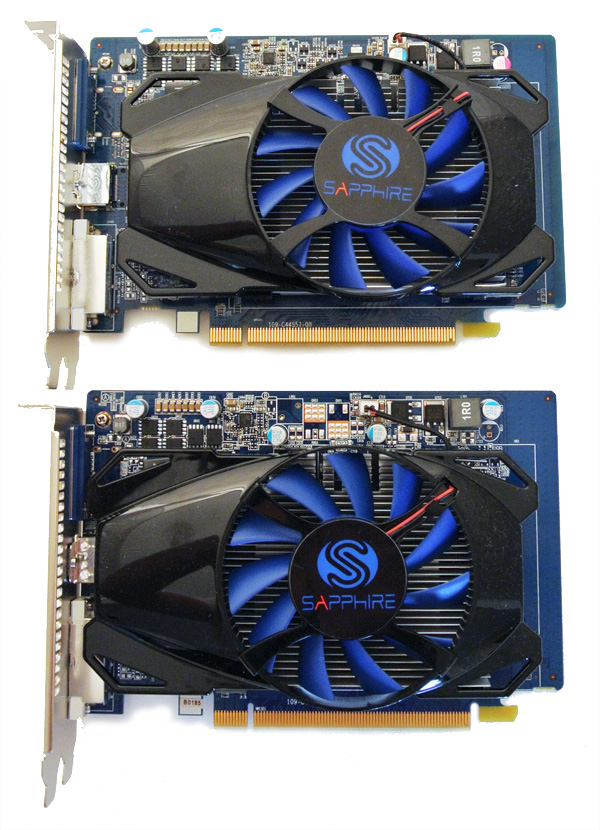
Sapphire sent us two Radeon HD 7730s to test. One is equipped with 2 GB of 900 MHz DDR3 and the second has half as much GDDR5 memory operating at 1125 MHz. Measuring 6.5"x4.25", both PCBs are the same size as AMD's reference Radeon HD 7750, although Sapphire employs a beefier dual-slot cooling solution. The two samples actually look pretty similar from up top; really, the biggest differences are down on the board.
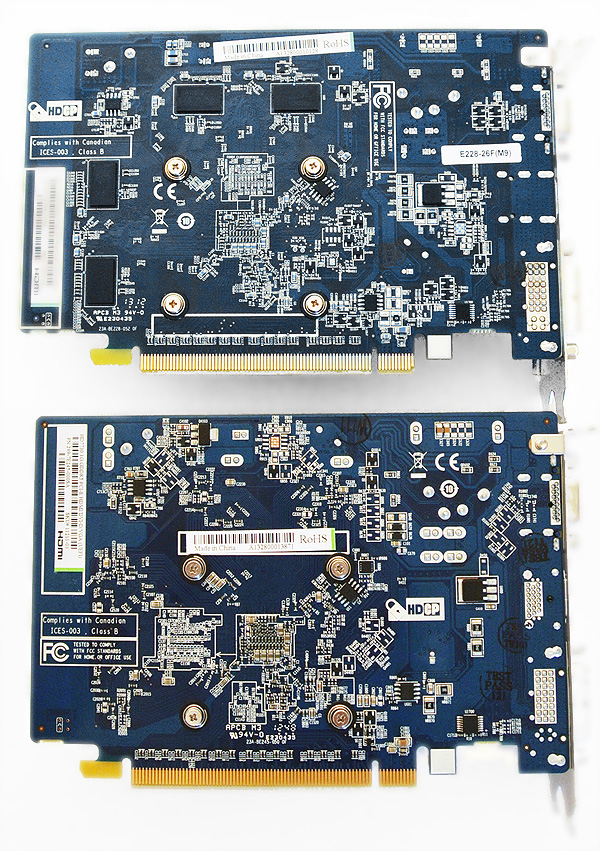
The boards also look alike from the back, though you can see the 2 GB model's extra DDR3 memory up top.

Both of Sapphire's Radeon HD 7730 cards feature dual-link DVI, HDMI, and VGA outputs. It's unfortunate that you don't get DisplayPort connectivity, which you'd want for a three-screen Eyefinity setup.
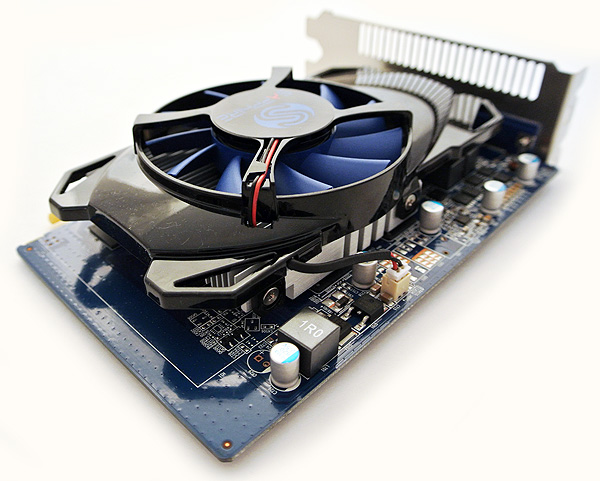
The 7730's 47 W TDP falls well below a 16-lane PCI Express slot's 75 W ceiling, so you don't need an auxiliary power input.
Sapphire's Dual-X cooler is equipped with a single 75 mm axial fan, and the cooing block is solid aluminum with no heat pipes.
AMD doesn't arm these cards with a physical bridge connector for CrossFire, though the multi-GPU technology is purportedly supported via software.
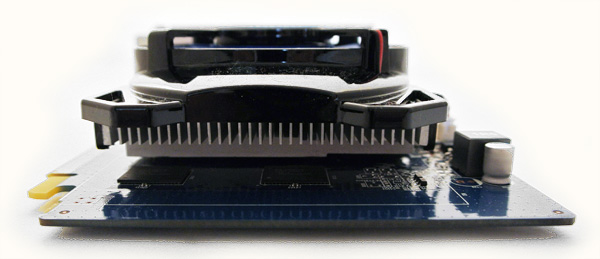
Given an entry-level target, you don't get much bundled with these cards: a driver CD, quick installation card, and Sapphire's registration card. There are three different output connectors, so adapters really aren't necessary anyway. And although this a Radeon HD 7700-series product, we're told that these low-budget boards do not qualify for AMD's Never Settle game bundle.
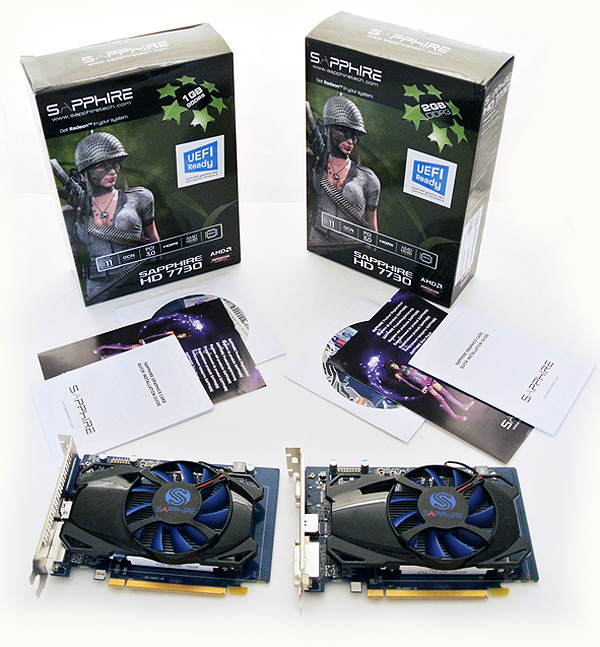
Current page: AMD's Radeon HD 7730: GCN Goes Entry-Level
Next Page Test Setup And Benchmarks